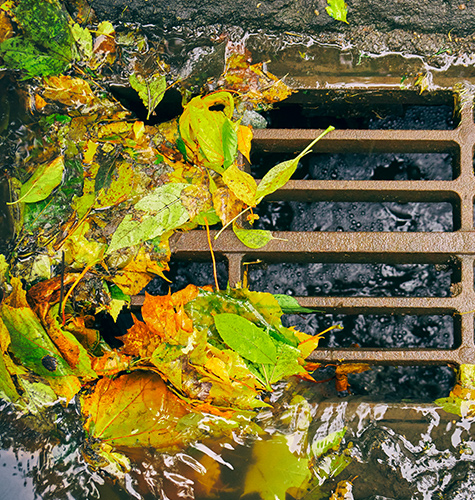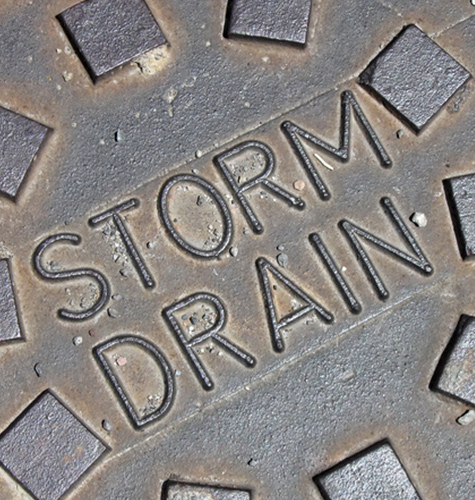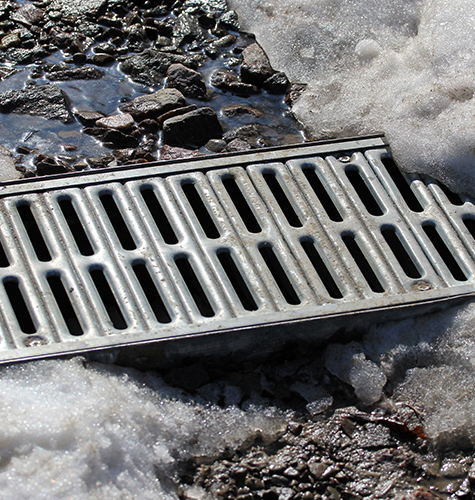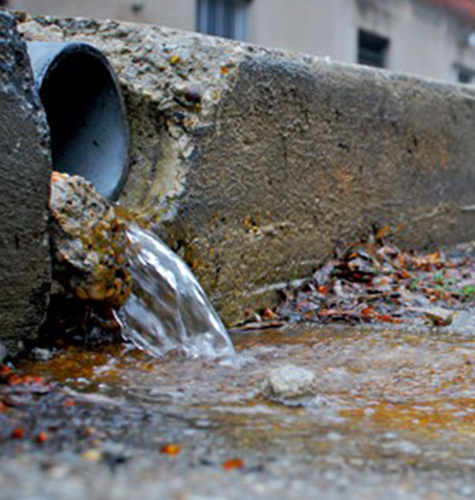View our most recent fact sheet: Lawn Conversion
Stormwater runoff from rainwater or melting snow transports pollutants into the stormwater system and ultimately into our local streams. Roads, parking lots, driveways, and rooftops prevent water from soaking into the ground. Instead, a large amount of stormwater goes directly into our streams. Because this stormwater runoff is not cleaned or filtered, many of our streams are polluted.
With more than 50 years of experience providing stormwater management solutions, our team stays abreast of the latest changes in state and federal regulations while developing beneficial and sustainable stormwater management plans. RETTEW’s MS4 newsletter draws on our collective experience to share best practices, regulatory changes, tips, and other information to help your municipality reduce stormwater pollution.
In this issue, we explore the effect of the PAG-13 MS4 General Permit and the recent U.S. Census Bureau decision to eliminate the “urbanized areas” definition. We also look at the benefits of converting lawns to meadows or woods. As a bonus, download the Lawn Conversion fact sheet, created specifically for you to share with residents!
PAG-13 MS4 General Permit Extended to March 15, 2025
Pennsylvania Department of Environmental Protection (PA DEP)
Good news for MS4 permittees! PA DEP has extended the current MS4 General Permit for two years, which means there are no new requirements until the next permit is issued. The expiration date for the current permit is now March 15, 2025.
However, this extension does not change the deadline to achieve the required pollutant reductions as approved in Pollutant Reduction Plans and Pollutant Control Measures. Hence, municipalities should continue to implement water quality projects to comply with current deadlines.
Additionally, this extension does not affect permittees who have individual MS4 Permits. Individual permittees are required to submit renewal applications at least 180 days prior to the expiration date of the permit.
Census Bureau Eliminates “Urbanized Areas” Definition
U.S. Census Bureau
In 2022, the U.S. Census Bureau changed the way they classify urban areas by eliminating the distinctions between different types of urban areas, including urban clusters and urbanized areas. Instead, the U.S. Census Bureau will classify land area as either urban or rural.
One reason this change matters is because “rural and urban areas often qualify for different types of federal funding for transportation, housing, health care, education and agriculture,” as the Associated Press reported. Additionally, since the MS4 Permit regulates stormwater within an urbanized area as defined by the U.S. Census, there is some uncertainty on how this will affect MS4 permittees. However, it is important to note:
- The Environmental Protection Agency is evaluating next steps to provide clarity, including considering whether revisions to the stormwater regulations may be appropriate.
- The U.S. Census Bureau will replace the term “urbanized area” with the phrase “urban areas with a population of at least 50,000.”
- Urban areas are defined as densely settled areas consisting of 2,000 or more housing units or 5,000 or more people.
- There is no definition of a rural area. Therefore, anything that is not urban is considered to be rural.
Lawn Conversion
Pennsylvania Department of Conservation and Natural Resources (PA DCNR)
Did you know that lawn/turfgrass is the biggest “crop” in the Chesapeake Bay Watershed, and there are more than 2 million acres of lawn in Pennsylvania? To improve water quality and ecological diversity, there is a movement underway to convert those lawn acres to native meadows and woods. Turfgrass does not provide food or shelter for native species, and it requires a lot of maintenance including fuel, labor, water, fertilizer, herbicides, and pesticides.
Lawns do have some benefits. They provide great cover to minimize soil erosion and are good for outdoor sports, recreation, and entertainment. However, there is an opportunity to convert many lawn acres to native meadows or woods. Benefits for conversion include:
- Clean Water – Shallow roots of turfgrass and compacted lawn soils limit water absorption when it rains. The ground is more effective at absorbing stormwater and filtering pollutants in meadows and woods.
- Habitat – Food and cover are available for pollinators, butterflies, songbirds, and small mammals.
- Biodiversity – Meadows can contain up to 100 species of plants, rather than a monoculture of turfgrass.
PA DCNR’s Lawn Conversion Program offers support for those who want to convert lawn to woods or meadows. According to the DCNR website, “the department can provide technical assistance and resources, support partnership development and projects, and fund eligible plantings.” Download the bonus Lawn Conversion fact sheet to share the benefits of natural landscaping with your residents! Feel free to use the fact sheet and other materials on this page in any communication or educational outreach to local residents and business owners.
You cannot protect the environment unless you empower people, you inform them, and you help them understand that these resources are their own, that they must protect them.
~Professor Wangari Maathai




